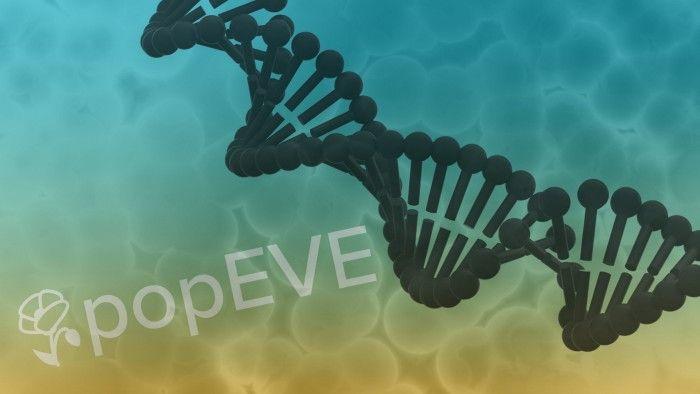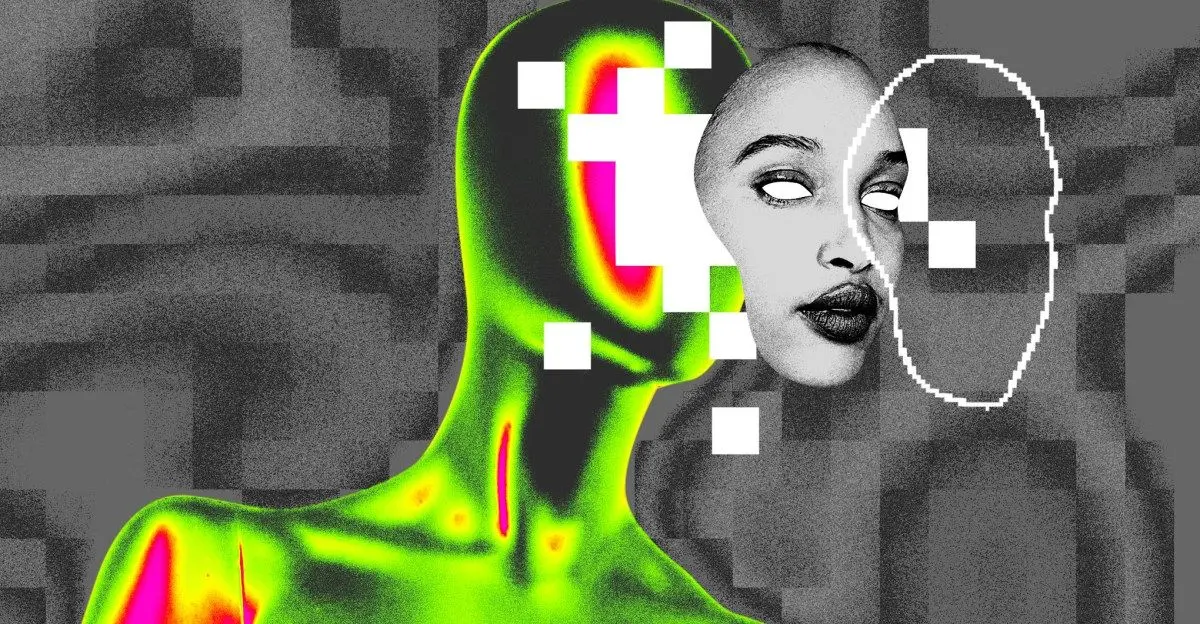AI Breakthrough: Repurposing Existing Drugs for Rare Disease Treatment
5 Sources
5 Sources
[1]
New AI tool revolutionizes drug discovery for rare diseases
Harvard Medical SchoolSep 25 2024 There are more than 7,000 rare and undiagnosed diseases globally. Although each condition occurs in a small number of individuals, collectively these diseases exert a staggering human and economic toll because they affect some 300 million people worldwide. Yet, with a mere 5 to 7 percent of these conditions having an FDA-approved drug, they remain largely untreated or undertreated. Developing new medicines represents a daunting challenge, but a new artificial intelligence tool can propel the discovery of new therapies from existing medicines, offering hope for patients with rare and neglected conditions and for the clinicians who treat them. The AI model, called TxGNN, is the first one developed specifically to identify drug candidates for rare diseases and conditions with no treatments. It identified drug candidates from existing medicines for more than 17,000 diseases, many of them without any existing treatments. This represents the largest number of diseases that any single AI model can handle to date. The researchers note that the model could be applied to even more diseases beyond the 17,000 it worked on in the initial experiments. The work, described Sept. 25 in Nature Medicine, was led by scientists at Harvard Medical School. The researchers have made the tool available for free and want to encourage clinician-scientists to use it in their search for new therapies, especially for conditions with no or with limited treatment options. With this tool we aim to identify new therapies across the disease spectrum but when it comes to rare, ultrarare, and neglected conditions, we foresee this model could help close, or at least narrow, a gap that creates serious health disparities." Marinka Zitnik, lead researcher, assistant professor of biomedical informatics in the Blavatnik Institute at HMS "This is precisely where we see the promise of AI in reducing the global disease burden, in finding new uses for existing drugs, which is also a faster and more cost-effective way to develop therapies than designing new drugs from scratch," added Zitnik, who is an associate faculty member at the Kempner Institute for the Study of Natural and Artificial Intelligence at Harvard University. The new tool has two central features -; one that identifies treatment candidates along with possible side effects and another one that explains the rationale for the decision. In total, the tool identified drug candidates from nearly 8,000 medicines (both FDA-approved medicines and experimental ones now in clinical trials) for 17,080 diseases, including conditions with no available treatments. It also predicted which drugs would have side effects and contraindications for specific conditions -; something that the current drug discovery approach identifies mostly by trial and error during early clinical trials focused on safety. Compared against the leading AI models for drug repurposing, the new tool was nearly 50 percent better, on average, at identifying drug candidates. It was also 35 percent more accurate in predicting what drugs would have contraindications. Advantages of using already approved drugs Repurposing existing drugs is an alluring way to develop new treatments because it relies on medicines that have been studied, have well-understood safety profiles, and have gone through the regulatory approval process. Most medicines have multiple effects beyond the specific targets they were originally developed and approved for. But many of these effects remain undiscovered and understudied during initial testing, clinical trials, and review, only emerging after years of use by millions of people. Indeed, nearly 30 percent of FDA- approved drugs have acquired at least one additional indication for treatment following initial approval, and many have acquired tens of additional treatment indications over the years. This approach to drug repurposing is haphazard at best. It relies on patient reports of unexpected beneficial side effects or on physicians' intuition about whether to use a drug for a condition that it was not intended for, a practice known as off-label use. "We've tended to rely on luck and serendipity rather than on strategy, which limits drug discovery to diseases for which drugs already exist," Zitnik said. The benefits of drug repurposing extend beyond diseases without treatments, Zitnik noted. "Even for more common diseases with approved treatments, new drugs could offer alternatives with fewer side effects or replace drugs that are ineffective for certain patients," she said. What makes the new AI tool better than existing models Most current AI models used for drug discovery are trained on a single disease or a handful of conditions. Rather than focusing on specific diseases, the new tool was trained in a manner that enables it to use existing data to make new predictions. It does so by identifying shared features across multiple diseases, such as shared genomic aberrations. For example, the AI model pinpoints shared disease mechanisms based on common genomic underpinnings, which allows it to extrapolate from a well-understood disease with known treatments to a poorly understood one with no treatments. This capacity, the research team said, brings the AI tool closer to the type of a reasoning a human clinician might use to generate novel ideas if they had access to all the preexisting knowledge and raw data that the AI model does but that the human brain cannot possibly access or store. The tool was trained on vast amounts of data, including DNA information, cell signaling, levels of gene activity, clinical notes, and more. The researchers tested and refined the model by asking it to perform various tasks. Finally, the tool's performance was validated on 1.2 million patient records and asked to identify drug candidates for various diseases. The researchers also asked the tool to predict what patient characteristics would render the identified drug candidates contraindicated for certain patient populations. Another task involved asking the tool to identify existing small molecules that might effectively block the activity of certain proteins implicated in disease-causing pathways and processes. In a test designed to gauge the model's ability to reason as a human clinician might, the researchers prompted the model to find drugs for three rare conditions it had not seen as part of its training -; a neurodevelopmental disorder, a connective-tissue disease, and a rare genetic condition that causes water imbalance. The researchers then compared the model's recommendations for drug therapy against current medical knowledge about how the suggested drugs work. In every example, the tool's recommendations aligned with current medical knowledge. Moreover, the model not only identified medicines for all three diseases but also provided the rationale behind its decision. This explainer feature allows for transparency and can increase physician confidence. The researchers caution that any therapies identified by the model would require additional evaluation for dosing and timing of delivery. But, they add, with this unprecedented capacity, the new AI model would expedite drug repurposing in a manner not possible until now. The team is already collaborating with several rare disease foundations to help identify possible treatments. Harvard Medical School Journal reference: Huang, K., et al. (2024). A foundation model for clinician-centered drug repurposing. Nature Medicine. doi.org/10.1038/s41591-024-03233-x.
[2]
AI model identifies existing drugs that can be repurposed for treatment of rare diseases
There are more than 7,000 rare and undiagnosed diseases globally. Although each condition occurs in a small number of individuals, collectively these diseases exert a staggering human and economic toll because they affect some 300 million people worldwide. Yet, with a mere 5 to 7% of these conditions having an FDA-approved drug, they remain largely untreated or undertreated. Developing new medicines represents a daunting challenge, but a new artificial intelligence tool can propel the discovery of new therapies from existing medicines, offering hope for patients with rare and neglected conditions and for the clinicians who treat them. The AI model, called TxGNN, is the first one developed specifically to identify drug candidates for rare diseases and conditions with no treatments. It identified drug candidates from existing medicines for more than 17,000 diseases, many of them without any existing treatments. This represents the largest number of diseases that any single AI model can handle to date. The researchers note that the model could be applied to even more diseases beyond the 17,000 it worked on in the initial experiments. The work, described Sept. 25 in Nature Medicine, was led by scientists at Harvard Medical School. The researchers have made the tool available for free and want to encourage clinician-scientists to use it in their search for new therapies, especially for conditions with no or with limited treatment options. "With this tool we aim to identify new therapies across the disease spectrum but when it comes to rare, ultrarare, and neglected conditions, we foresee this model could help close, or at least narrow, a gap that creates serious health disparities," said lead researcher Marinka Zitnik, assistant professor of biomedical informatics in the Blavatnik Institute at HMS. "This is precisely where we see the promise of AI in reducing the global disease burden, in finding new uses for existing drugs, which is also a faster and more cost-effective way to develop therapies than designing new drugs from scratch," added Zitnik, who is an associate faculty member at the Kempner Institute for the Study of Natural and Artificial Intelligence at Harvard University. The new tool has two central features -- one that identifies treatment candidates along with possible side effects and another one that explains the rationale for the decision. In total, the tool identified drug candidates from nearly 8,000 medicines (both FDA-approved medicines and experimental ones now in clinical trials) for 17,080 diseases, including conditions with no available treatments. It also predicted which drugs would have side effects and contraindications for specific conditions -- something that the current drug discovery approach identifies mostly by trial and error during early clinical trials focused on safety. Compared against the leading AI models for drug repurposing, the new tool was nearly 50% better, on average, at identifying drug candidates. It was also 35% more accurate in predicting what drugs would have contraindications. Repurposing existing drugs is an alluring way to develop new treatments because it relies on medicines that have been studied, have well-understood safety profiles, and have gone through the regulatory approval process. Most medicines have multiple effects beyond the specific targets they were originally developed and approved for. But many of these effects remain undiscovered and understudied during initial testing, clinical trials, and review, only emerging after years of use by millions of people. Indeed, nearly 30% of FDA- approved drugs have acquired at least one additional indication for treatment following initial approval, and many have acquired tens of additional treatment indications over the years. This approach to drug repurposing is haphazard at best. It relies on patient reports of unexpected beneficial side effects or on physicians' intuition about whether to use a drug for a condition that it was not intended for, a practice known as off-label use. "We've tended to rely on luck and serendipity rather than on strategy, which limits drug discovery to diseases for which drugs already exist," Zitnik said. The benefits of drug repurposing extend beyond diseases without treatments, Zitnik noted. "Even for more common diseases with approved treatments, new drugs could offer alternatives with fewer side effects or replace drugs that are ineffective for certain patients," she said. Most current AI models used for drug discovery are trained on a single disease or a handful of conditions. Rather than focusing on specific diseases, the new tool was trained in a manner that enables it to use existing data to make new predictions. It does so by identifying shared features across multiple diseases, such as shared genomic aberrations. For example, the AI model pinpoints shared disease mechanisms based on common genomic underpinnings, which allows it to extrapolate from a well-understood disease with known treatments to a poorly understood one with no treatments. This capacity, the research team said, brings the AI tool closer to the type of reasoning a human clinician might use to generate novel ideas if they had access to all the preexisting knowledge and raw data that the AI model does but that the human brain cannot possibly access or store. The tool was trained on vast amounts of data, including DNA information, cell signaling, levels of gene activity, clinical notes, and more. The researchers tested and refined the model by asking it to perform various tasks. Finally, the tool's performance was validated on 1.2 million patient records and asked to identify drug candidates for various diseases. The researchers also asked the tool to predict what patient characteristics would render the identified drug candidates contraindicated for certain patient populations. Another task involved asking the tool to identify existing small molecules that might effectively block the activity of certain proteins implicated in disease-causing pathways and processes. In a test designed to gauge the model's ability to reason as a human clinician might, the researchers prompted the model to find drugs for three rare conditions it had not seen as part of its training -- a neurodevelopmental disorder, a connective-tissue disease, and a rare genetic condition that causes water imbalance. The researchers then compared the model's recommendations for drug therapy against current medical knowledge about how the suggested drugs work. In every example, the tool's recommendations aligned with current medical knowledge. Moreover, the model not only identified medicines for all three diseases but also provided the rationale behind its decision. This explainer feature allows for transparency and can increase physician confidence. The researchers caution that any therapies identified by the model would require additional evaluation for dosing and timing of delivery. But, they add, with this unprecedented capacity, the new AI model would expedite drug repurposing in a manner not possible until now. The team is already collaborating with several rare disease foundations to help identify possible treatments.
[3]
Researchers Harness AI to Repurpose Existing Drugs | Newswise
Newswise -- There are more than 7,000 rare and undiagnosed diseases globally. Although each condition occurs in a small number of individuals, collectively these diseases exert a staggering human and economic toll because they affect some 300 million people worldwide. Yet, with a mere 5 to 7 percent of these conditions having an FDA-approved drug, they remain largely untreated or undertreated. Developing new medicines represents a daunting challenge, but a new artificial intelligence tool can propel the discovery of new therapies from existing medicines, offering hope for patients with rare and neglected conditions and for the clinicians who treat them. The AI model, called TxGNN, is the first one developed specifically to identify drug candidates for rare diseases and conditions with no treatments. It identified drug candidates from existing medicines for more than 17,000 diseases, many of them without any existing treatments. This represents the largest number of diseases that any single AI model can handle to date. The researchers note that the model could be applied to even more diseases beyond the 17,000 it worked on in the initial experiments. The work, described Sept. 25 in Nature Medicine, was led by scientists at Harvard Medical School. The researchers have made the tool available for free and want to encourage clinician-scientists to use it in their search for new therapies, especially for conditions with no or with limited treatment options. "With this tool we aim to identify new therapies across the disease spectrum but when it comes to rare, ultrarare, and neglected conditions, we foresee this model could help close, or at least narrow, a gap that creates serious health disparities," said lead researcher Marinka Zitnik, assistant professor of biomedical informatics in the Blavatnik Institute at HMS. "This is precisely where we see the promise of AI in reducing the global disease burden, in finding new uses for existing drugs, which is also a faster and more cost-effective way to develop therapies than designing new drugs from scratch," added Zitnik, who is an associate faculty member at the Kempner Institute for the Study of Natural and Artificial Intelligence at Harvard University. The new tool has two central features -- one that identifies treatment candidates along with possible side effects and another one that explains the rationale for the decision. In total, the tool identified drug candidates from nearly 8,000 medicines (both FDA-approved medicines and experimental ones now in clinical trials) for 17,080 diseases, including conditions with no available treatments. It also predicted which drugs would have side effects and contraindications for specific conditions -- something that the current drug discovery approach identifies mostly by trial and error during early clinical trials focused on safety. Compared against the leading AI models for drug repurposing, the new tool was nearly 50 percent better, on average, at identifying drug candidates. It was also 35 percent more accurate in predicting what drugs would have contraindications. Advantages of using already approved drugs Repurposing existing drugs is an alluring way to develop new treatments because it relies on medicines that have been studied, have well-understood safety profiles, and have gone through the regulatory approval process. Most medicines have multiple effects beyond the specific targets they were originally developed and approved for. But many of these effects remain undiscovered and understudied during initial testing, clinical trials, and review, only emerging after years of use by millions of people. Indeed, nearly 30 percent of FDA- approved drugs have acquired at least one additional indication for treatment following initial approval, and many have acquired tens of additional treatment indications over the years. This approach to drug repurposing is haphazard at best. It relies on patient reports of unexpected beneficial side effects or on physicians' intuition about whether to use a drug for a condition that it was not intended for, a practice known as off-label use. "We've tended to rely on luck and serendipity rather than on strategy, which limits drug discovery to diseases for which drugs already exist," Zitnik said. The benefits of drug repurposing extend beyond diseases without treatments, Zitnik noted. "Even for more common diseases with approved treatments, new drugs could offer alternatives with fewer side effects or replace drugs that are ineffective for certain patients," she said. What makes the new AI tool better than existing models Most current AI models used for drug discovery are trained on a single disease or a handful of conditions. Rather than focusing on specific diseases, the new tool was trained in a manner that enables it to use existing data to make new predictions. It does so by identifying shared features across multiple diseases, such as shared genomic aberrations. For example, the AI model pinpoints shared disease mechanisms based on common genomic underpinnings, which allows it to extrapolate from a well-understood disease with known treatments to a poorly understood one with no treatments. This capacity, the research team said, brings the AI tool closer to the type of a reasoning a human clinician might use to generate novel ideas if they had access to all the preexisting knowledge and raw data that the AI model does but that the human brain cannot possibly access or store. The tool was trained on vast amounts of data, including DNA information, cell signaling, levels of gene activity, clinical notes, and more. The researchers tested and refined the model by asking it to perform various tasks. Finally, the tool's performance was validated on 1.2 million patient records and asked to identify drug candidates for various diseases. The researchers also asked the tool to predict what patient characteristics would render the identified drug candidates contraindicated for certain patient populations. Another task involved asking the tool to identify existing small molecules that might effectively block the activity of certain proteins implicated in disease-causing pathways and processes. In a test designed to gauge the model's ability to reason as a human clinician might, the researchers prompted the model to find drugs for three rare conditions it had not seen as part of its training -- a neurodevelopmental disorder, a connective-tissue disease, and a rare genetic condition that causes water imbalance. The researchers then compared the model's recommendations for drug therapy against current medical knowledge about how the suggested drugs work. In every example, the tool's recommendations aligned with current medical knowledge. Moreover, the model not only identified medicines for all three diseases but also provided the rationale behind its decision. This explainer feature allows for transparency and can increase physician confidence. The researchers caution that any therapies identified by the model would require additional evaluation for dosing and timing of delivery. But, they add, with this unprecedented capacity, the new AI model would expedite drug repurposing in a manner not possible until now. The team is already collaborating with several rare disease foundations to help identify possible treatments. Authorship, funding, disclosures Co-authors included Kexin Huang, Payal Chandak, Qianwen Wang, Shreyas Havaldar, Akhil Vaid, Jure Leskovec, Girish N. Nadkarni, Benjamin S. Glicksberg, and Nils Gehlenborg. This work was supported by National Science Foundation CAREER award (grant 2339524), National Institutes of Health (grant R01-HD108794), U.S. Department of Defense (grant FA8702-15-D-0001), Amazon Faculty Research, Google Research Scholar Program, AstraZeneca Research, Roche Alliance with Distinguished Scientists, Sanofi iDEA-TECH Award, Pfizer Research, Chan Zuckerberg Initiative, John and Virginia Kaneb Fellowship at HMS, Biswas Family Foundation Transformative Computational Biology Grant in partnership with the Milken Institute, HMS Dean's Innovation Awards for the Use of Artificial Intelligence, Kempner Institute for the Study of Natural and Artificial Intelligence at Harvard University, and Dr. Susanne E. Churchill Summer Institute in Biomedical Informatics at HMS.
[4]
AI Revolutionizes Drug Discovery for Rare Diseases - Neuroscience News
Summary: AI tool has identified drug candidates for over 17,000 rare and untreated diseases, offering hope for millions of affected individuals. This tool, TxGNN, stands out as the first model developed specifically to repurpose existing drugs for neglected conditions. It predicts which drugs may work and potential side effects, providing new avenues for treatment. The AI model is free to use and aims to expedite therapeutic discoveries for patients in need. There are more than 7,000 rare and undiagnosed diseases globally. Although each condition occurs in a small number of individuals, collectively these diseases exert a staggering human and economic toll because they affect some 300 million people worldwide. Yet, with a mere 5 to 7 percent of these conditions having an FDA-approved drug, they remain largely untreated or undertreated. Developing new medicines represents a daunting challenge, but a new artificial intelligence tool can propel the discovery of new therapies from existing medicines, offering hope for patients with rare and neglected conditions and for the clinicians who treat them. The AI model, called TxGNN, is the first one developed specifically to identify drug candidates for rare diseases and conditions with no treatments. It identified drug candidates from existing medicines for more than 17,000 diseases, many of them without any existing treatments. This represents the largest number of diseases that any single AI model can handle to date. The researchers note that the model could be applied to even more diseases beyond the 17,000 it worked on in the initial experiments. The work, described Sept. 25 in Nature Medicine, was led by scientists at Harvard Medical School. The researchers have made the tool available for free and want to encourage clinician-scientists to use it in their search for new therapies, especially for conditions with no or with limited treatment options. "With this tool we aim to identify new therapies across the disease spectrum but when it comes to rare, ultrarare, and neglected conditions, we foresee this model could help close, or at least narrow, a gap that creates serious health disparities," said lead researcher Marinka Zitnik, assistant professor of biomedical informatics in the Blavatnik Institute at HMS. "This is precisely where we see the promise of AI in reducing the global disease burden, in finding new uses for existing drugs, which is also a faster and more cost-effective way to develop therapies than designing new drugs from scratch," added Zitnik, who is an associate faculty member at the Kempner Institute for the Study of Natural and Artificial Intelligence at Harvard University. The new tool has two central features -- one that identifies treatment candidates along with possible side effects and another one that explains the rationale for the decision. In total, the tool identified drug candidates from nearly 8,000 medicines (both FDA-approved medicines and experimental ones now in clinical trials) for 17,080 diseases, including conditions with no available treatments. It also predicted which drugs would have side effects and contraindications for specific conditions -- something that the current drug discovery approach identifies mostly by trial and error during early clinical trials focused on safety. Compared against the leading AI models for drug repurposing, the new tool was nearly 50 percent better, on average, at identifying drug candidates. It was also 35 percent more accurate in predicting what drugs would have contraindications. Advantages of using already approved drugs Repurposing existing drugs is an alluring way to develop new treatments because it relies on medicines that have been studied, have well-understood safety profiles, and have gone through the regulatory approval process. Most medicines have multiple effects beyond the specific targets they were originally developed and approved for. But many of these effects remain undiscovered and understudied during initial testing, clinical trials, and review, only emerging after years of use by millions of people. Indeed, nearly 30 percent of FDA- approved drugs have acquired at least one additional indication for treatment following initial approval, and many have acquired tens of additional treatment indications over the years. This approach to drug repurposing is haphazard at best. It relies on patient reports of unexpected beneficial side effects or on physicians' intuition about whether to use a drug for a condition that it was not intended for, a practice known as off-label use. "We've tended to rely on luck and serendipity rather than on strategy, which limits drug discovery to diseases for which drugs already exist," Zitnik said. The benefits of drug repurposing extend beyond diseases without treatments, Zitnik noted. "Even for more common diseases with approved treatments, new drugs could offer alternatives with fewer side effects or replace drugs that are ineffective for certain patients," she said. What makes the new AI tool better than existing models Most current AI models used for drug discovery are trained on a single disease or a handful of conditions. Rather than focusing on specific diseases, the new tool was trained in a manner that enables it to use existing data to make new predictions. It does so by identifying shared features across multiple diseases, such as shared genomic aberrations. For example, the AI model pinpoints shared disease mechanisms based on common genomic underpinnings, which allows it to extrapolate from a well-understood disease with known treatments to a poorly understood one with no treatments. This capacity, the research team said, brings the AI tool closer to the type of a reasoning a human clinician might use to generate novel ideas if they had access to all the preexisting knowledge and raw data that the AI model does but that the human brain cannot possibly access or store. The tool was trained on vast amounts of data, including DNA information, cell signaling, levels of gene activity, clinical notes, and more. The researchers tested and refined the model by asking it to perform various tasks. Finally, the tool's performance was validated on 1.2 million patient records and asked to identify drug candidates for various diseases. The researchers also asked the tool to predict what patient characteristics would render the identified drug candidates contraindicated for certain patient populations. Another task involved asking the tool to identify existing small molecules that might effectively block the activity of certain proteins implicated in disease-causing pathways and processes. In a test designed to gauge the model's ability to reason as a human clinician might, the researchers prompted the model to find drugs for three rare conditions it had not seen as part of its training -- a neurodevelopmental disorder, a connective-tissue disease, and a rare genetic condition that causes water imbalance. The researchers then compared the model's recommendations for drug therapy against current medical knowledge about how the suggested drugs work. In every example, the tool's recommendations aligned with current medical knowledge. Moreover, the model not only identified medicines for all three diseases but also provided the rationale behind its decision. This explainer feature allows for transparency and can increase physician confidence. The researchers caution that any therapies identified by the model would require additional evaluation for dosing and timing of delivery. But, they add, with this unprecedented capacity, the new AI model would expedite drug repurposing in a manner not possible until now. The team is already collaborating with several rare disease foundations to help identify possible treatments. Authorship, funding, disclosures Co-authors included Kexin Huang, Payal Chandak, Qianwen Wang, Shreyas Havaldar, Akhil Vaid, Jure Leskovec, Girish N. Nadkarni, Benjamin S. Glicksberg, and Nils Gehlenborg. Funding: This work was supported by National Science Foundation CAREER award (grant 2339524), National Institutes of Health (grant R01-HD108794), U.S. Department of Defense (grant FA8702-15-D-0001), Amazon Faculty Research, Google Research Scholar Program, AstraZeneca Research, Roche Alliance with Distinguished Scientists, Sanofi iDEA-TECH Award, Pfizer Research, Chan Zuckerberg Initiative, John and Virginia Kaneb Fellowship at HMS, Biswas Family Foundation Transformative Computational Biology Grant in partnership with the Milken Institute, HMS Dean's Innovation Awards for the Use of Artificial Intelligence, Kempner Institute for the Study of Natural and Artificial Intelligence at Harvard University, and Dr. Susanne E. Churchill Summer Institute in Biomedical Informatics at HMS.
[5]
AI's latest trick: repurposing old drugs for rare disease
The big picture: The Harvard Medical School researchers behind the tool, called TxGNN, write today in Nature Medicine that it can identify candidates for 17,000 conditions -- the largest number of diseases that any single AI model can handle to date. Details: The tool has two features: one that identifies drug candidates and possible side effects and another that explains the rationale for the decision. Between the lines: There are other tools on the market that ID drugs that can be repurposed. But the process often is "serendipitous and opportunistic," the researchers write. Yes, but: The researchers acknowledge the tool's success is only as good as the medical knowledge it uses to derive conclusions. The bottom line: The AI model could provide a more cost-effective way to develop therapies than designing new drugs from scratch, said lead researcher Marinka Zitnik in a statement.
Share
Share
Copy Link
Researchers have developed a new AI tool that revolutionizes drug discovery for rare diseases. This innovative approach repurposes existing medications, potentially accelerating treatment options for millions of patients worldwide.

AI-Powered Drug Repurposing for Rare Diseases
In a groundbreaking development, researchers have harnessed the power of artificial intelligence to revolutionize the treatment of rare diseases. A new AI tool has been created that can efficiently identify existing drugs that could be repurposed to treat rare conditions, potentially offering hope to millions of patients worldwide
1
.The Challenge of Rare Disease Treatment
Rare diseases, collectively affecting an estimated 400 million people globally, have long posed a significant challenge to the medical community. Traditional drug development for these conditions is often hindered by high costs and lengthy timelines, leaving many patients without effective treatments
2
.AI's Role in Drug Repurposing
The newly developed AI tool addresses this challenge by analyzing vast amounts of biomedical data to identify potential matches between existing drugs and rare diseases. This approach, known as drug repurposing, significantly reduces the time and cost associated with bringing new treatments to market
3
.How the AI Tool Works
The AI system utilizes advanced machine learning algorithms to process and interpret complex biological data. It examines the molecular structures of approved drugs and compares them to the biological pathways involved in rare diseases. This analysis helps identify drugs that could potentially interact with these pathways in beneficial ways
4
.Promising Results and Future Implications
Early results from the AI tool have been encouraging. Researchers have already identified several promising drug candidates for rare diseases that were previously overlooked. This breakthrough could lead to a paradigm shift in how we approach rare disease treatment, offering new hope to patients who have long been underserved by traditional drug development methods
5
.Related Stories
Challenges and Considerations
While the potential of this AI-driven approach is significant, experts caution that further clinical trials and regulatory approvals will be necessary before repurposed drugs can be widely used for rare diseases. Additionally, ethical considerations surrounding data privacy and AI decision-making in healthcare remain important topics of discussion
1
.Collaborative Efforts and Future Research
The development of this AI tool represents a collaborative effort between computer scientists, biologists, and medical researchers. As the technology continues to evolve, there is hope that it will not only accelerate drug discovery for rare diseases but also contribute to a broader understanding of disease mechanisms and potential treatments across various medical fields
3
.References
Summarized by
Navi
[1]
[2]
[4]
Related Stories
Harvard's AI Model PDGrapher: Revolutionizing Drug Discovery for Complex Diseases
09 Sept 2025•Science and Research

AI Tool Uncovers Life-Saving Treatment for Rare Disease, Opening New Possibilities in Drug Repurposing
06 Feb 2025•Health

New AI Model popEVE Revolutionizes Rare Disease Diagnosis Using Evolutionary Data
24 Nov 2025•Health

Recent Highlights
1
Nvidia drops $20 billion on AI chip startup Groq in largest acquisition ever
Business and Economy

2
Meta acquires Manus for $2 billion, adding revenue-generating AI agents to its platforms
Business and Economy

3
China proposes world's strictest AI chatbot rules to prevent suicide and emotional manipulation
Policy and Regulation




